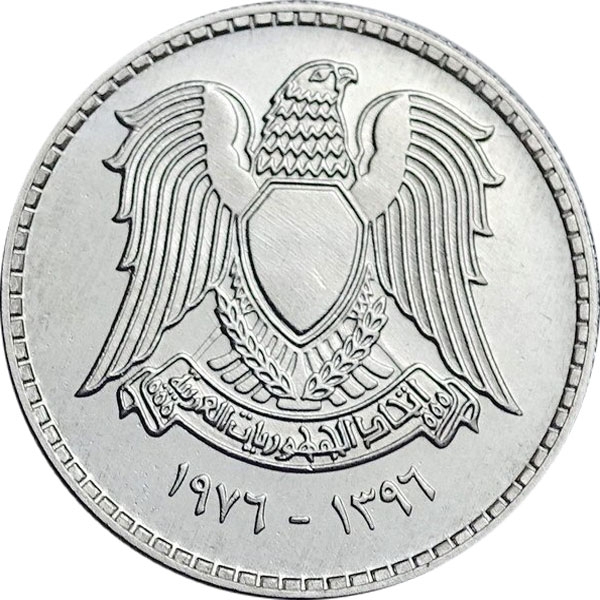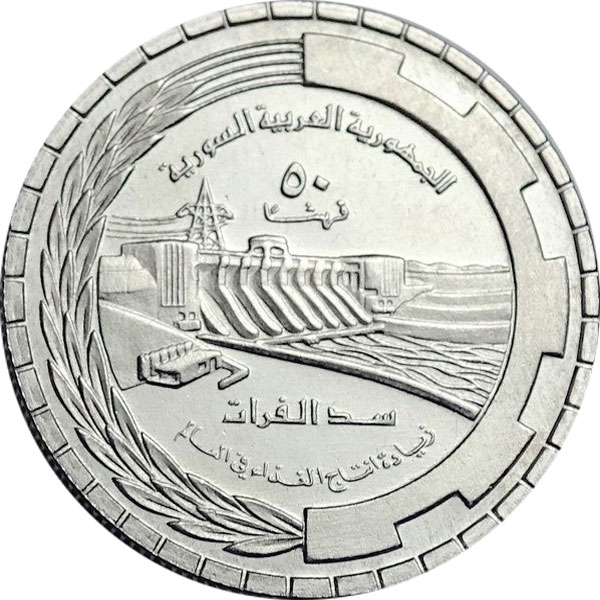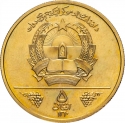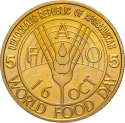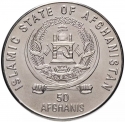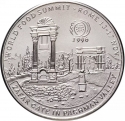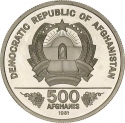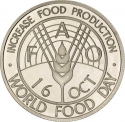You are about to finish your registration. Please check your mailbox (including spam folder). There should be a letter with a confirmation link. Check setting to make sure that your e-mail address is correct.
Send letter againDescription
The Federation of Arab Republics (Arabic: اتحاد الجمهوريات العربية Ittiḥād al-Jumhūrīyāt al-‘Arabīyah) was an attempt by Muammar Gaddafi to merge Libya, Egypt and Syria in order to create a United Arab state. Although approved by a referendum in each country on 1 September 1971, the three countries disagreed on the specific terms of the merger. The federation lasted from 1 January 1972 to 19 November 1977.
Obverse

|
Coat of arms of Syria within the Federation of Arab Republics, date (AD left and AH right) in Arabic digits below. اتحاد الجمهوريات العربية |
|---|---|
Reverse

|
Depicts the Tabqa Dam within a circle made of 1/2 gear and an oat sprig. Name of the country "Arab Republic of Syria" above, denomination and inscriptions "Tabqa Dam" and "Increase food production in the world" below. الجمهورية العربية السورية |
| Edge |
50 Qirsh
(Piastres)
Federation of Arab Republics
KM# 113 Schön# 46
Related coins
Food and Agriculture Organization (FAO)
